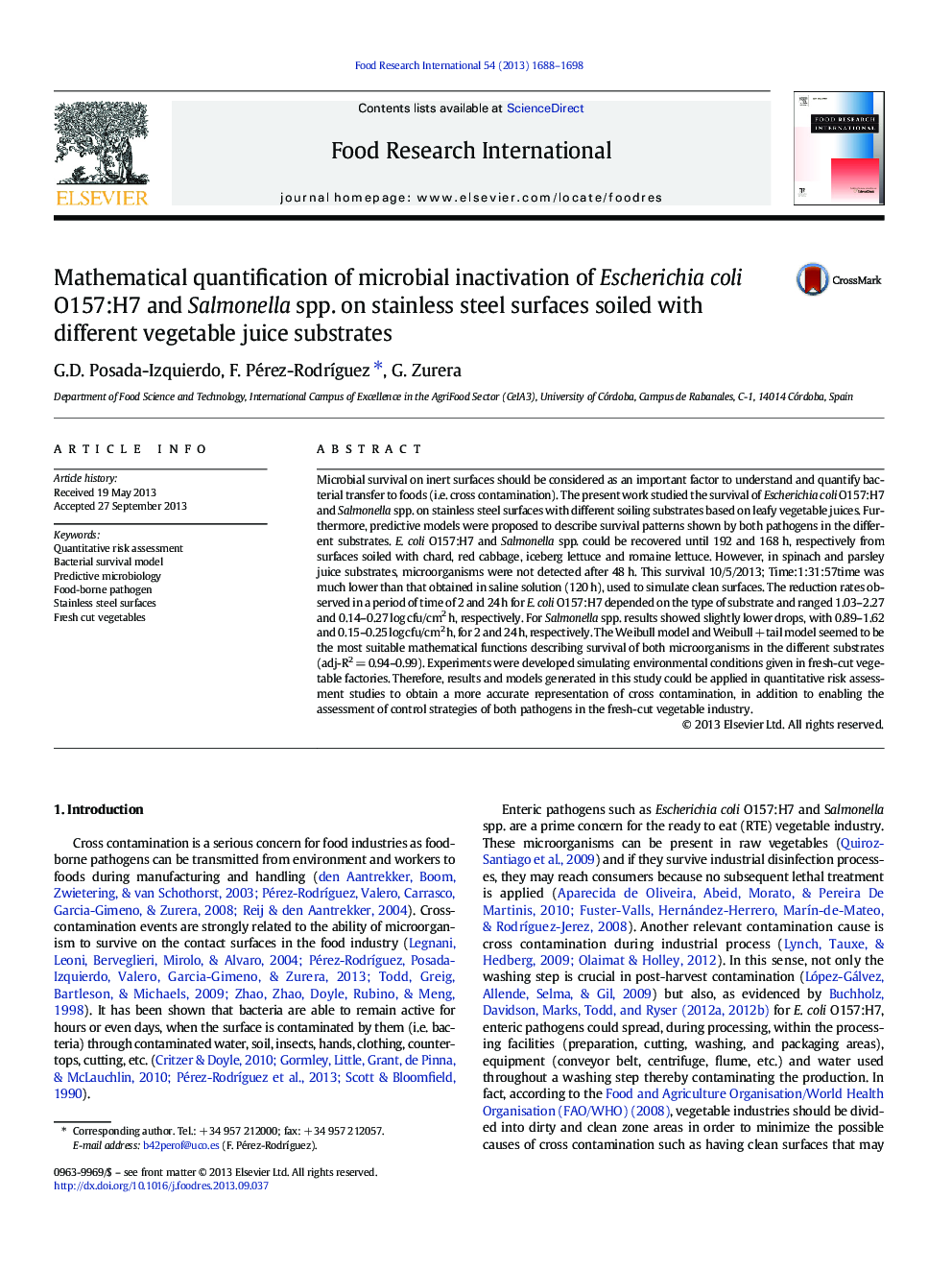| کد مقاله | کد نشریه | سال انتشار | مقاله انگلیسی | نسخه تمام متن |
|---|---|---|---|---|
| 6397399 | 1330675 | 2013 | 11 صفحه PDF | دانلود رایگان |

- E. coli and Salmonella survived  â¤Â 8 days on stainless steel soiled with vegetables.
- The vegetable substrate affected bacterial survival on stainless steel.
- Weibull and Weibull+tail models were suitable to describe bacterial survival.
- Spinach and parsley substrates resulted in the highest inactivation rates.
Microbial survival on inert surfaces should be considered as an important factor to understand and quantify bacterial transfer to foods (i.e. cross contamination). The present work studied the survival of Escherichia coli O157:H7 and Salmonella spp. on stainless steel surfaces with different soiling substrates based on leafy vegetable juices. Furthermore, predictive models were proposed to describe survival patterns shown by both pathogens in the different substrates. E. coli O157:H7 and Salmonella spp. could be recovered until 192 and 168 h, respectively from surfaces soiled with chard, red cabbage, iceberg lettuce and romaine lettuce. However, in spinach and parsley juice substrates, microorganisms were not detected after 48 h. This survival 10/5/2013; Time:1:31:57time was much lower than that obtained in saline solution (120 h), used to simulate clean surfaces. The reduction rates observed in a period of time of 2 and 24 h for E. coli O157:H7 depended on the type of substrate and ranged 1.03-2.27 and 0.14-0.27 log cfu/cm2 h, respectively. For Salmonella spp. results showed slightly lower drops, with 0.89-1.62 and 0.15-0.25 log cfu/cm2 h, for 2 and 24 h, respectively. The Weibull model and Weibull + tail model seemed to be the most suitable mathematical functions describing survival of both microorganisms in the different substrates (adj-R2 = 0.94-0.99). Experiments were developed simulating environmental conditions given in fresh-cut vegetable factories. Therefore, results and models generated in this study could be applied in quantitative risk assessment studies to obtain a more accurate representation of cross contamination, in addition to enabling the assessment of control strategies of both pathogens in the fresh-cut vegetable industry.
Journal: Food Research International - Volume 54, Issue 2, December 2013, Pages 1688-1698